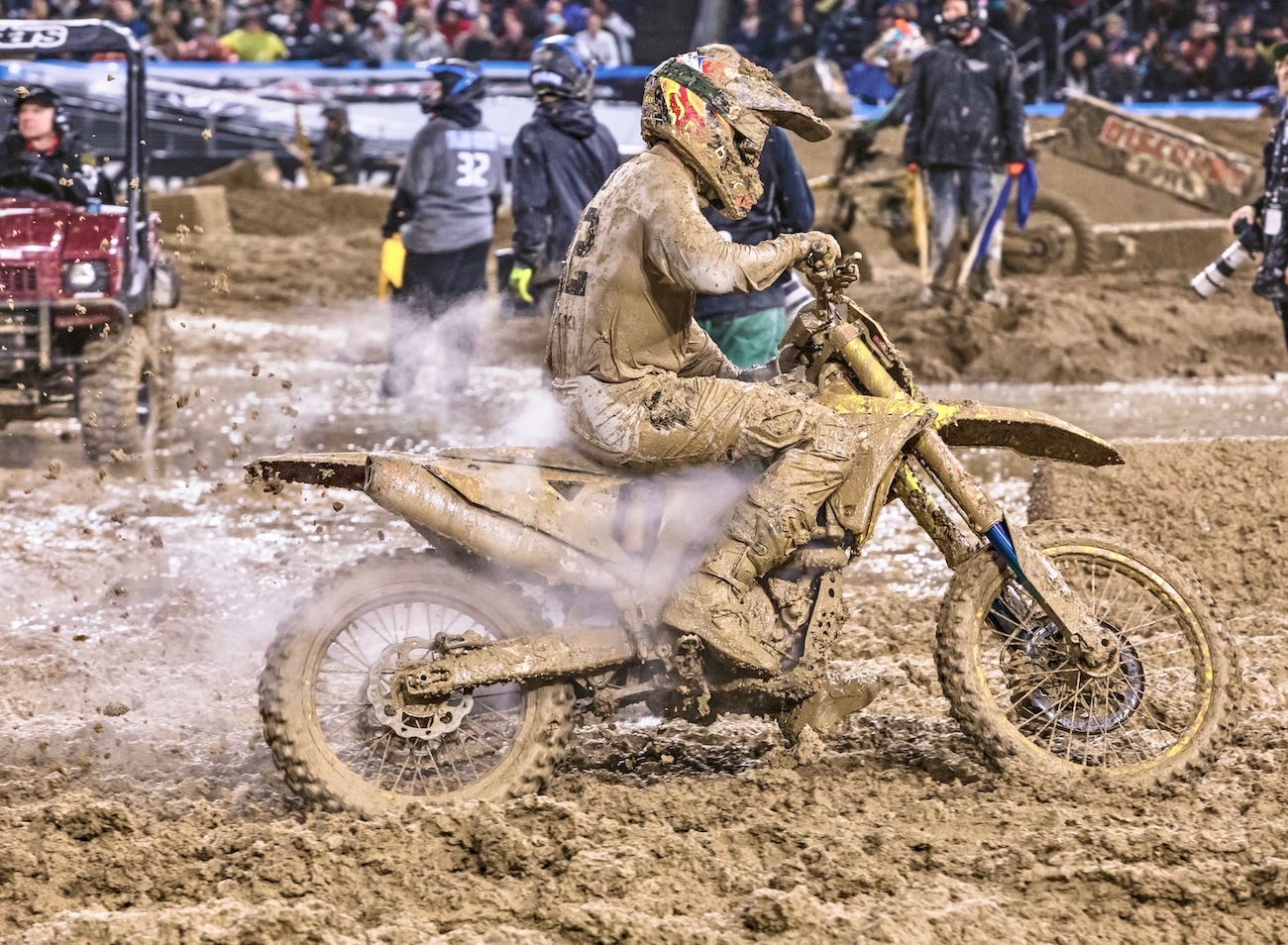ASK THE MXPERTS: IS IT SMOKING OR IS IT STEAMING?
 You don’t have to worry too much when an engine emits steam; you have to worry when it stops steaming.
You don’t have to worry too much when an engine emits steam; you have to worry when it stops steaming.
WHEN SMOKE IS REALLY STEAM
Dear MXperts,
My Honda CRF450 overheats while I’m racing it. If it is a hot day or a deep sand track, when I come into the pits after a moto, I can smell boiling antifreeze. When the radiator cools down, I have to add water. What can I do to stop this?
You have almost limitless options, but we will only focus on six things:
(1) Heat. Most racers want increased horsepower, which comes from more aggressive ignition timing, leaner fuel mixtures, aftermarket pipes, and increased compression. But factory teams know that heat is a byproduct of power, and if they can’t keep the heat under control, it doesn’t matter how much effort they put into producing power. You gotta get rid of heat to make more speed.
(2) Radiators. To get the most out of your radiators, be sure that air entering the radiators isn’t obstructed by dirt, bent fins or damaged louvers. Check that the air doesn’t have an easier path around the radiators, but instead is forced through them. Finally, for air to blow through the radiators, it needs an unobstructed path to escape after exiting the radiators. Aftermarket radiators increase cooling performance by increasing the surface areas of heat-transferring components (the water in the radiators, the radiator’s core size and the condition of the radiator’s cooling fins). Plastic companies make radiator wings, number plates and front fenders that seek to get more air through the radiators with vents and ducting.
(3) Water pumps. Aftermarket water pumps and impellers, like the Boyesen Supercooler, measurably reduce engine temperatures by improving circulation with better ducting and more efficient impellers.
(4) Hoses. Increasing the radius of any sharp bends in the plumbing with a hose kit helps the liquid flow through the system with less cavitation (air bubbles) in the water, as does eliminating the bolt-on Y-junctions, which slows down water velocity. As for coolants and additives, they often make exaggerated claims, but special coolants do a good job.
(5) Fuel octane. If you run fuel with too low of a fuel octane rating for your engine’s state of tune, it can cause an uneven combustion burn, leading to hot spots in the cylinder and detonation. A lower-compression piston can reduce the combustion chamber temperature, but if the engine has to work harder to produce the same amount of power in a given situation, it will have to run hotter to achieve that desired output. Boosting performance with a high-compression piston is fine, as long as you run appropriately high-octane fuel.
(6) Steam. When the TV announcers say that a bike is smoking at a mud race, that is not smoke; it is actually steam coming out of the radiator overflow tubes. The most common cause of turning your internal combustion engine into a steam engine is over-use of the clutch. In mud races, riders rely on the clutch to keep the bike moving; but even in dry conditions, the clutch can cause an engine to overheat if it is used in every corner. The design of a clutch, with its friction plates rubbing against each other, is an incredible source of engine heat. Lay off the clutch if you can.






Comments are closed.